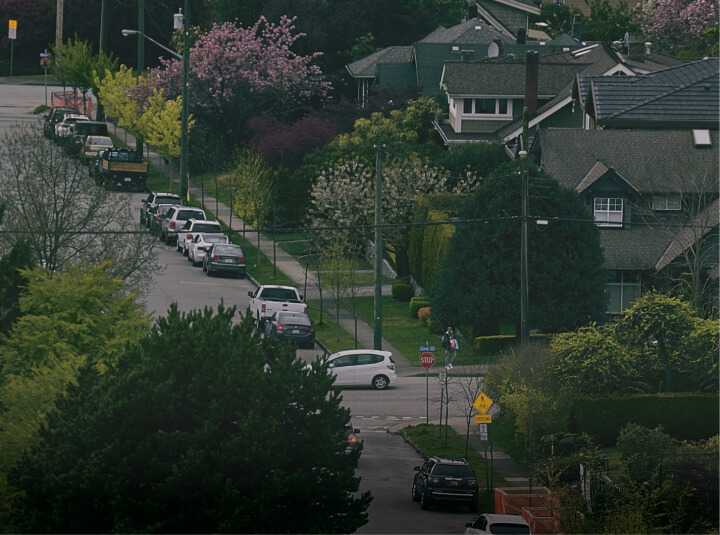interested in other markets?
Alongside the Vancouver edition of the rennie landscape, our intelligence group also produces editions for the Victoria and Kelowna markets. Read them at the links below.
table of contents
shaping seattle
Seattle is in the middle of a contentious once-a-decade process to update its comprehensive housing growth plan, which will dictate where future densification can occur over the next 20 years. Dubbed the “One Seattle Comprehensive Plan” by Mayor Harrell, in its current form, the proposal would allow for up to 330,000 new housing units through zoning changes. The most impactful change will be to designate four zoning types that will divide the city:
building in the middle
In 2023, Washington passed HB 1110, a landmark “middle housing” law requiring cities to increase density in areas previously zoned exclusively for single-family homes. Under the law, cities with a population of over 75,000 would be required to allow up to fourplexes on any residential lot and sixplexes within a quarter-mile of a major transit stop. The formal compliance deadline was set for June 30, 2025, and serious efforts to implement the law in most jurisdictions only began in earnest last year.
Seattle, Bellevue, and Kirkland are among the cities that have started rolling out interim measures to meet the state’s new requirements. In Seattle, as it finalizes its aforementioned comprehensive zoning plan, the city is working on a stop-gap zoning measure, which includes new regulations to allow more multi-family housing types in single-family zones. Bellevue has similarly advanced a draft Middle Housing Land Use Code Amendment, while also revisiting its building height and setback regulations to accommodate fourplexes. Across other cities that have already implemented similar density increases, builders have predominantly focused on constructing 4-6 unit townhome developments, and there is broad consensus that this will likely be the most common form of new housing resulting from these zoning changes.
the rise of renter rights
As Washington debates statewide rent caps, cities enacting their own tenant protection laws— extending notice periods, easing lease breaks, and offering relocation aid.
Cities in Washington are prohibited by state law from passing rent control measures. And given uncertainty on whether the rent cap bill discussed in the previous section will ultimately be effected, local legislatures are taking matters into their own hands with the passage of various other kinds of rental protection measures.
While Washington currently mandates 60-day notices for rent increases, both the cities of Woodinville and Spokane recently passed increased notice requirements of 120-or 180-days, depending on the size of increase. They join cities such as Burien, Kirkland, Kenmore, and Redmond, which all passed increased notice period laws in recent years.
In addition, the City of Olympia recently introduced a number of other more creative tenant protection policies, such as allowing tenants to break their leases within 30 days of receiving a rent increase, or eligibility for relocation assistance of 2.5 months of rent if they face a rent increase of 7% or more. This is similar to the cities like Tacoma and Bellingham, which both recently introduced similar relocation assistance laws.
subscribe to real estate insights that matter
Real estate insights, analysis and perspective from our rennie intelligence division—helping you make sense of Seattle’s market.
By submitting your personal information, you consent to receive electronic messages from rennie marketing systems, including newsletters and event invitations. You can withdraw your consent at any time by following the unsubscribe link in any message. You can also refer to rennie’s privacy policy for more information and contact details.
06. policy
Every ten years, Seattle updates its comprehensive zoning plan, which is a blueprint for the city's growth. Today, the process is underway again, outlining where future development and densification will occur.
Regional Centers: formerly known as Urban Centers, these are the six densest areas in Seattle, with high-rise condo towers, office buildings, hotels, and large-scale commercial hubs. The 2025 plan will expand the Uptown Regional Center to include the future light rail station.
Urban Cores: previously named Urban Villages, these are the commercial cores of various Seattle neighborhoods. These areas typically include retail centers, restaurants, and low-to mid-rise (4-8 storeys) buildings and will see little change under the new plan.
Neighborhood Centers: a new type of zoning designation that would largely exist around the boundaries of Urban Cores. The plan proposes the creation of 30 of these new centers, which will allow for low-rise (4-6 storey) buildings as well as mixed-use buildings. This has been one of the more controversial aspects of the plan, facing much push-back from interest groups that oppose density in previously quiet, single-family neighborhoods.
Urban Neighborhoods: the primary residential zone in Seattle, which currently allows for single-family homes and makes up approximately 75% of the city. Zoning in these areas will be updated to abide by new state legislation that allows increased density in previous single-family areas.
A consequential rental bill, which would cap annual rent increases at 10% plus inflation statewide, is nearing passage in the state legislature. House Bill 1217 is the latest version of rent cap legislation that state Democrats have tried unsuccessfully to implement for years. In April, the bill passed both chambers for the first time, and it seems likely that the House will accept the final changes.
Opponents of the bill argue that the cap would make it difficult for non-institutional landlords to keep up with rising costs, as well as driving out developers and thereby reducing available rental supply. Proponents say that the bill, which would be the first of its kind in the state’s history, would give renters much needed stability and predictability in their housing costs.
If signed into law by Governor Ferguson, landlords could set initial rents at any rate, but would not be able to raise rents within the first year, and would have to abide by the rental cap thereafter. In addition, the bill mandates a 90-day notice period for any such increases.
put a cap on it
copyright © 2025 rennie all rights reserved
rennie group
By using this website, you agree to our Privacy Policy and Terms of Use.
do not share or sell my personal information
California DRE #02248150




















